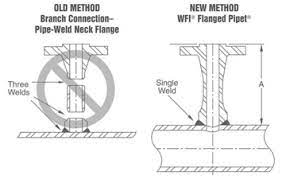Steph07
Petroleum
- Mar 28, 2023
- 3
Hi everyone,
What is everyone's take on using a forged outlet fitting like the Pipet vs. a standard three-weld option like the Weldolet. I am trying to get a sense if something like the Pipet is used a lot and if not, why are they not being used more? Any help would be appreciated. Thanks!
See the attachment for example.
What is everyone's take on using a forged outlet fitting like the Pipet vs. a standard three-weld option like the Weldolet. I am trying to get a sense if something like the Pipet is used a lot and if not, why are they not being used more? Any help would be appreciated. Thanks!
See the attachment for example.

